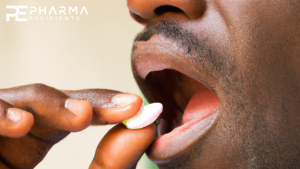The use of polymorphic state modifiers in solid lipid microparticles: The role of structural modifications on drug release performance

This study investigates the correlation between the structural and release properties of solid lipid microparticles (MPs) of tristearin containing 5 % w/w of four different liquid additives used as crystal modifiers: isopropyl myristate (IM), ethyl oleate (EO), oleic acid (OA) and medium chain triglycerides (MCT). All additives accelerated the conversion of the unstable α-form of tristearin, formed after the MPs manufacturing, to the stable β-polymorph and the transformation was completed within 24 h (for IM and EO) or 48 h (for OA and MCT). The kinetic of polymorphic transition at 25 °C was investigated by simultaneous synchrotron SAXS/WAXS and DSC analysis after melting and subsequent cooling of the lipid mixture. After crystallization in the α-phase, additives accelerate the solid-solid phase transformation to β-tristearin.
SAXS data showed that two types of structural modifications occurred on MPs during storage: compaction of the crystal packing (slight decrease in lamellar thickness) and crystal growth (increased number of stacked lipid lamellae). The release behavior of a model hydrophilic drug (caffeine) at two different amounts (15 % and 30 %) from MPs was studied in water and biorelevant media simulated the gastric and intestinal environment. It was particularly significant that the introduction of IM, EO and MCT were able to prolong the drug release in water, passing from a diffusion-based Higuchi kinetics to a perfect zero-order kinetic. Moreover, the overall release profiles were higher in biorelevant media, where erosion/digestion of MPs was observed.
After 6 months, a moderate but statistically significant change in release profile was observed for the MPs with IM and EO, which can be correlated with the time-dependent structural alterations (i.e. larger average crystallite size) of these formulations; while MPs with OA or MCT displayed stable release profiles. These findings help to understand the correlation between release behavior, polymorphism and supramolecular‐level structural modification of lipid formulations containing crystal modifiers.
Download the full article as PDF here The use of polymorphic state modifiers in solid lipid microparticles: The role of structural modifications on drug release performance
or read it here
Materials
Tristearin (SSS, Dynasan®118, purity 99 %) was kindly provided by IOI Oleo (Witten, Germany). For β-SSS, Dynasan®118 was used as received. α-SSS was obtained by melting tristearin at 90 °C followed by rapid cooling to room temperature. Caffeine (CAF) was purchased from Sigma-Aldrich (Steinheim, Germany). Isopropyl myristate (IM) were obtained from Fluka (Buchs, Switzerland). Ethyl oleate (EO) and oleic acid (OA) were purchased from Carlo Erba Reagents (Milan, Italy). Medium chain trigycerides (MCT, Labrafac™ lipophile WL 1349) was supplied from Gattefossè (Milan, Italy). Taurocholic acid sodium salt hydrate (99 % TLC, 3.9 % water, MW = 537.68 g/mol anhydrous base) was kindly supplied by Prodotti Chimici Alimentari (Basaluzzo, Italy). Pepsin from porcine gastric mucosa (tested according to Ph.Eur), L-α-Phosphatidylcholine from egg yolk (Lecithin, 76.1 % TLC), pancreatin from porcine pancreas (8 × USP specifications) were purchased from Sigma Aldrich (Steinheim, Germany).
Serena Bertoni, Elena Simone, Stefano Sangiorgi, Beatrice Albertini, Nadia Passerini, The use of polymorphic state modifiers in solid lipid microparticles: The role of structural modifications on drug release performance, European Journal of Pharmaceutical Sciences, Volume 192, 2024, 106650, ISSN 0928-0987, https://doi.org/10.1016/j.ejps.2023.106650.
Read also more on Orally Disintegrating Tablets (ODTs) here:


